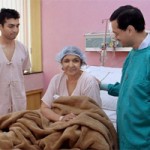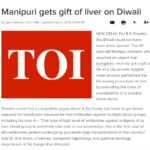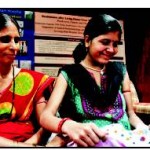WHO NEEDS A LIVER TRANSPLANT?
In adults, the most common reason for needing a liver transplant is cirrhosis. Cirrhosis can be caused by many different types of diseases that destroy healthy liver cells and replace them with scar tissue. Generally speaking, any patient suffering from liver cirrhosis who is estimated to have a life expectancy of less than a year or so is a candidate for a liver transplant. The severity of liver disease is graded from A to C on the basis of Child’s scoring or calculated according to a newly devised formula known as the MELD (Model for End-stage Liver Disease) score. Usually all grade C and most grade B patients are candidates for transplant. In simple words, if the liver fails due to advanced cirrhosis or acute liver failure, liver transplantation is indicated. Some of the common identifiable symptoms of advanced cirrhosis or liver failure are mentioned below. Initially these symptoms can be controlled with medical or endoscopic therapy but occurrence of these complications clearly indicates limited reserve in the liver and one should start planning for liver transplantation at this time.
Indications for Liver Transplant
Acute/Fulminant liver failure:
Chronic Liver disease:
Extrahepatic biliary atresia)
Malignancy:
Metabolic disorders:
Miscellaneous:
|
Success rate of Liver Transplantation
Dr Naimish Mehta is experienced in living donor liver transplantation and is successfully running a liver transplant programme in one of the tertiary referral centre in India. Several national and international patients have undergone LDLT with a success rate of 93% survival. We have the lowest reported rate of biliary complications (5%) as compared to other liver transplant centres in the world. Results in liver cancer are equally good at 85% survival.
Performance
The Liver Transplant unit is one of the foremost state-of-the art facilities of its type in the Indian subcontinent. It provides a world-class service in cadaveric and living related liver transplantation with advanced infrastructure and experienced multidisciplinary team to support all aspects of the speciality. Our key strengths are internationally recognized faculty members who have been previously trained and have worked in the best centres abroad, operating rooms conforming to international standards and a dedicated Liver ICU which is second to none.
Infrastructure (photographs): Hosp, CT scan dept, ICU, Operation theatres, Blood Bank, Nephrology (dialysis), Cardiology, Physiotherapy
Advances/Scope in LT:
Increasing numbers of patients waiting for liver transplantation and high pre-transplant mortality rates have led to adoption of numerous technically variations.Domino liver transplantation: It is a sequential transplant in which a patientwith a suitable metabolic disorder like familial amyloid polyneuropathy or Maple Syrup Urinary disease(MSUD) is grafted with a new liverto halt progressionand palliate associated symptoms. The otherwise normal liveris used for selected recipients with end stage liver disease.
Dual Lobe Grafts: If there is a mismatch between donor weight and recipient weight, leading to low graft to recipient weight ratio, this can be overcome by taking grafts from two donors and transplanting into one recipient. Technically it is a complex procedure involving three operation theatres, several team members working in conjunction. At Sir Ganga Ram Hospital (SGRH) we have performed two Dual lobe transplants.
Simultaneous Liver- Kidney Transplant: This is performed in patients with end stage renal disease in addition to end stage liver disease. Simultaneous transplants rarely reported in living donor situation. We have performed 8 simultaneous liver and kidney transplants using different donors for each organ at SGRH.
Paired Donor Exchange (Swap): In cases where donor cannot donate because of size or blood group mismatch. Two such complementary donor recipient pairs can exchange donors to make both transplants possible. Although reported in kidney transplantation, this has not been previously reported in living donor liver transplantation. At SGRH, 4 paired donor exchange transplants has been performed.



